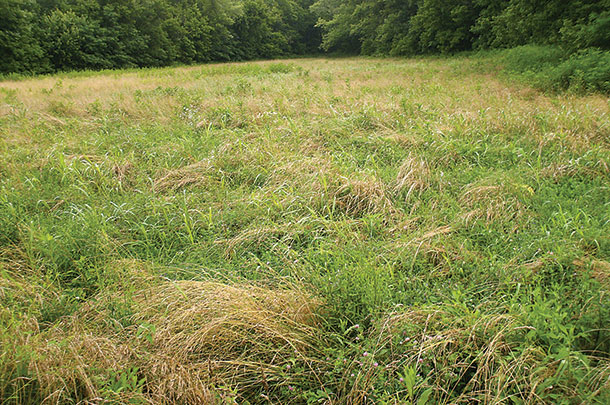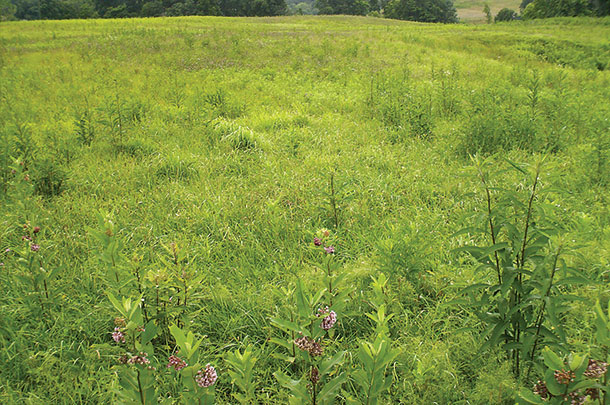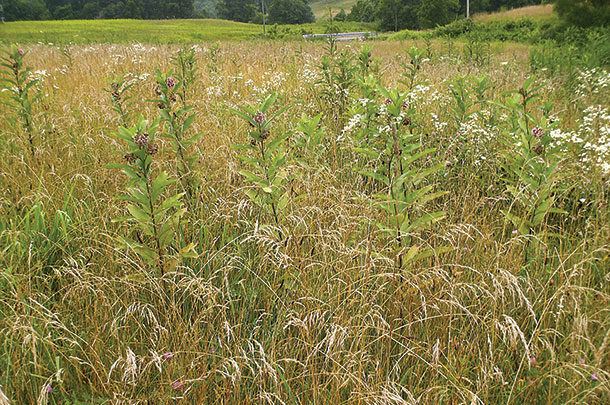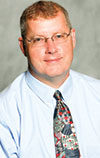At this stage, if first cutting is not complete, many would argue that quality is not going down any more. That is likely true for the grass and legumes in the fields, but I will suggest that weeds keep growing in many fields and continue to lower overall quality.
At the time of this writing, it is the middle of July, and I still have half of first cutting to go – and second cutting that was first cut in May is over a month behind. There are many in this situation; some have been tempted to cut corners, some wonder what to do, and some wonder how they will feed livestock this winter.
Don’t cut corners
When there are short windows to put up hay, sometimes we are tempted to bale hay when the moisture content is too high. According to Dennis Hancock, forage extension specialist with the University of Georgia, as a “rule of thumb” small square bales should be at 20 percent moisture or less, round bales at 18 percent or less, and large square bales at 16 percent or less.
Higher moisture levels will lead to lower quality and quantity as the hay goes through a “sweat” or heats up.
If the hay starts to heat up, we need to monitor the temperatures. If the hay heats to 100 to 120ºF, it will be fine; if it goes above that, monitor daily. Once it gets to 140ºF, consider tearing down the stack. At 150 to 160ºF, call the fire department – and once it gets to 160ºF, there will be smoldering pockets and hot spots, and gases will ignite hay when exposed to air.
If you have a new seeding and the hay needs to be cut but the ground is too soft, be patient to make sure hayfields are dry enough to support equipment before trying to get out on them.
 According to Mark Sulc, Ohio State University extension forage specialist, the loss of quality in one cutting (even the complete loss of the value of one cutting) is less than ruining a forage stand for the remainder of its productive life by running equipment on ground that is still too soft, especially if it is a younger stand.
According to Mark Sulc, Ohio State University extension forage specialist, the loss of quality in one cutting (even the complete loss of the value of one cutting) is less than ruining a forage stand for the remainder of its productive life by running equipment on ground that is still too soft, especially if it is a younger stand.
So be patient. Take a long look and wait until the field is dry enough to support the equipment without damaging the forage stand.
Sulc goes on to say there is potentially a silver lining for those who have overgrown hayfields that were saturated before you could harvest them. The silver lining is this: Flooding damage is usually much more severe in newly harvested stands than in stands with full growth present during periods of soil saturation.
Research conducted in Wooster, Ohio, by Dr. Al Barta a number of years ago demonstrated that alfalfa damage was most severe when the alfalfa had been harvested right before a flooding event.
In contrast, flooding damage was much less severe in alfalfa that was full-grown, in flower stage and had not been cut prior to the flooding event. So place your focus on that and watch how overripe fields recover compared with fields that were cut right when all the saturated soil conditions developed.
This is probably good news for some of you, but bad news for others who did get your hay cut before all the rain.
What to do?
When the wet weather pattern settled in Ohio in early June, many more round and large square bales were wrapped for high-moisture hay. Is greenchopping some of the hay an option? Can some fields be grazed or second-cutting hay be stockpiled for grazing later on?

When you have a chance to cut hay, making the swath as wide as possible, conditioning and tedding can all help with curing. Environmental factors, especially sunshine (radiant energy), play a major role. Humidity, air temperature, wind and soil moisture are considerations.
How will you feed this to livestock?
Many will have hay that is low in energy and protein, and this will affect performance of our livestock. I cannot emphasize enough the importance of a feed analysis. John Grimes, OSU extension beef coordinator, conducted a survey of producers that attended the 2015 Ohio Beef School, and only 20 percent of the producers conduct a feed analysis annually.
If you have late-harvested hay this year, a feed analysis is critical. You will then be able to balance protein and energy needs for your livestock. Grain and protein supplements are considerations.
We can also think about stockpiling forages (adding nitrogen to grass can increase quality and quantity). Other crops, such as brassicas and small grains, can be grown and grazed that have higher protein and energy to balance out the poor-quality hay.
This year has been another challenge. At this point in the season, I am simply hoping to make enough hay to feed my cattle this winter. I still have time to figure out ways to balance the nutrient needs for my cattle. In the meantime, I will make hay when the chance arises, try not to cut corners, take forage samples to balance rations and hope to “ride out the storm.” FG
References omitted due to space but are available upon request. Click here to email an editor.
PHOTOS 1 & 2: These hayfields in southeast Ohio have yet to be mown due to rainy, wet weather (picture taken in mid-July). While the late cutting has caused the grass to mature and even start to die, the weeds continue to thrive, reducing quality even further.
PHOTO 3: This field was cut in May but still awaits second cutting due to rains and wet soils. Photos courtesy of Chris Penrose.

-
Chris Penrose
- OSU Extension Educator
- Agriculture and Natural Resources Morgan County
- Email Chris Penrose












